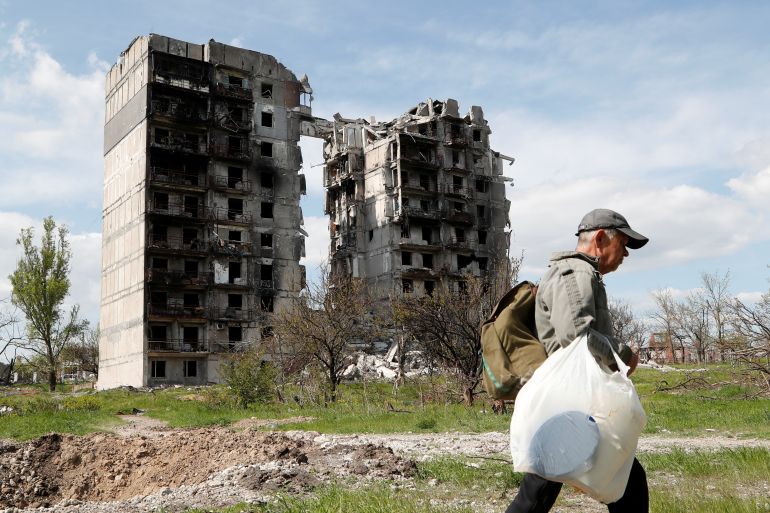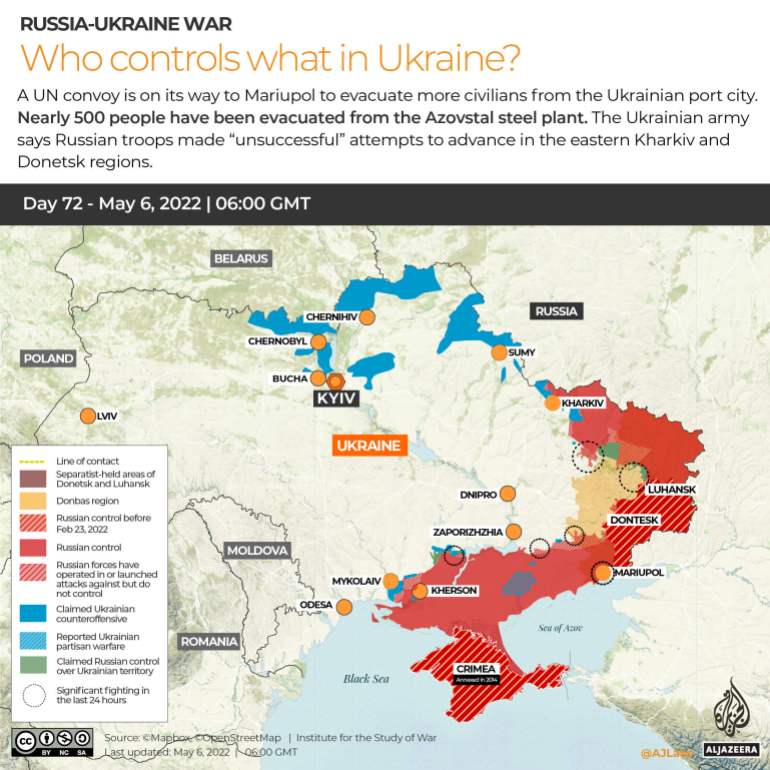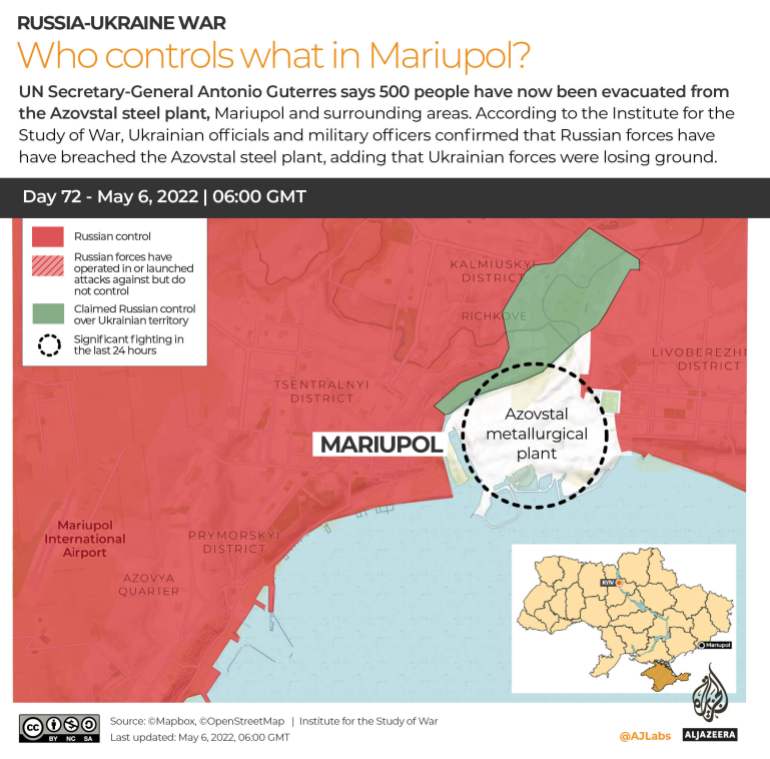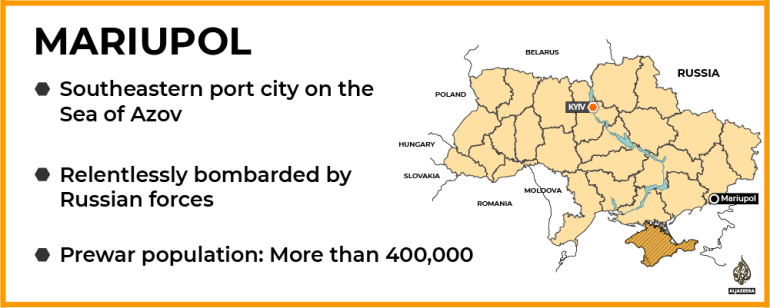50 more civilians rescued from besieged steel plant in Mariupol
‘Women, children and elderly people’ evacuated from Azovstal plant amid claims Russia violated a ceasefire.

Fifty more civilians, including 11 children, have been rescued from tunnels under a besieged steel plant in Mariupol where Ukrainian fighters have been making their last stand against Russian forces in the port city.
The Russian Interdepartmental Humanitarian Response Centre, a Russian government agency, issued a statement saying 11 children were among the 50 people rescued from the Azovstal steel plant on Friday and handed over to representatives of the UN and the International Committee of the Red Cross.
Keep reading
list of 4 itemsRussia-Ukraine war: What would a victory look like now to Putin?
UN readies third evacuation from Mariupol ‘hellscapes’
Russia: What is Victory Day, and why is it important this May 9?
Ukraine’s deputy prime minister Iryna Vereshchuk confirmed that 50 “women, children and elderly people” managed to leave the sprawling complex, and she and the Russian agency said rescue efforts would continue in the destroyed city on Saturday.
The evacuations of civilians trapped in the bombed-out steelworks took place amid accusations that Russia was violating a ceasefire intended to allow them to depart.
Earlier on Friday, at least 25 civilians arrived at a camp in the Russian-controlled town of Bezimenne on two separate buses, the Reuters news agency reported. Evacuees were accompanied to the reception centre by representatives of the international Red Cross and the UN.
Officials at the centre said they expected several buses to arrive during the rest of the day.

The city’s mayor has estimated 200 people remained trapped at the plant with little food or water.
Mariupol authorities earlier said Russian forces had fired at a car that was involved in an attempt to evacuate the plant, killing one Ukrainian fighter and wounding six.
Andriy Biletsky, a founder of the Azov Batallion that is present in the steelworks, said the site was under renewed attack on Friday and appealed for help with evacuations.
Russia made no immediate comment. It has previously said humanitarian corridors were in place.
Hundreds more evacuated from Mariupol
Ukrainian official confirmed earlier on Friday that more civilians had been rescued from the tunnels under the sprawling Soviet-era Azovstal plant on Thursday. Andriy Yermak, the head of Ukraine’s presidential office, said in a post on the Telegram messaging app that authorities had “conducted another stage of a complex operation to evacuate people from Mariupol and Azovstal”.
“I can say that we managed to take out almost 500 civilians,” he said, confirming an earlier figure provided by UN Secretary-General Antonio Guterres.

People escaping Mariupol typically have to pass through contested areas and many checkpoints – sometimes taking days to reach relative safety in the Ukrainian-controlled city of Zaporizhzhia, about 230km (140 miles) to the northwest.
More than 100 civilians bunkered under the steelworks were rescued last weekend in an earlier UN-assisted operation.
Battle for strategically important Mariupol
Around 2,000 Ukrainian troops, by Russia’s most recent estimate, remain holed up in a vast maze of tunnels and bunkers beneath the steelworks.
The fighters have repeatedly rejected demands from Moscow to surrender.
The fall of Mariupol would be a key development in the war as it would deprive Ukraine of a vital port, allow Russia to establish a land corridor to the Crimean Peninsula, which it seized from Ukraine in 2014, and free up troops to fight elsewhere in the eastern Donbas region, which the Kremlin has refocused its offensive on.

Its capture also holds symbolic value since the city has been the scene of some of the worst fighting of the war and a dogged resistance effort.
Elsewhere in Ukraine, Russian troops have struggled to make significant gains, 10 weeks into a devastating war that has killed thousands of people, if not more, forced millions to flee the country and flattened large swaths of cities.
The Ukrainian military’s General Staff said on Friday that its forces had repelled 11 attacks in the Donbas and destroyed tanks and armored vehicles, further frustrating Russian President Vladimir Putin’s ambitions after his aborted attempt to seize Kyiv earlier in the conflict.